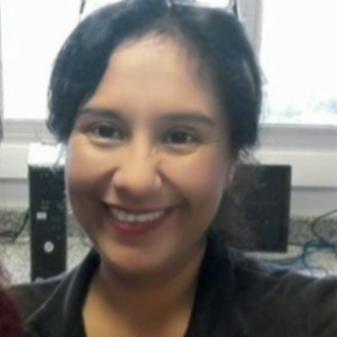Coloquios IEEE Nano Peru - Agosto 2023
The IEEE Nano Peru colloquia are part of the scientific activities promoted by the Peru Chapter of the IEEE Nanotechnology Council in order to disseminate the scientific work currently being developed in the area of nanoscience and
nanotechnology.
For the realization of these regular events there are guests of recognized scientific trajectory.
(These talks will be given in Spanish)
Date and Time
Location
Hosts
Registration
-
 Add Event to Calendar
Add Event to Calendar
Loading virtual attendance info...
- Calle Germán Amézaga 375.
- Lima, Lima
- Peru
- Building: Auditorio del Instituto de Física. Universidad Nacional Mayor de San Marcos
Speakers
 Poma of Institute of Fundamental Technological Research, Polish Academy of Science
Poma of Institute of Fundamental Technological Research, Polish Academy of Science
Multiscale simulations for the sampling of large conformational changes in biomolecules
Molecular dynamics (MD) simulation has become the computational microscope and together with multiscale approaches are powerful tools for the study at the nanoscale of complex systems. This knowledge is allowing us to develop novel strategies for the understanding of the biomolecular organization in cells and its biomechanical response. The modeling of a heterogeneous system composed of proteins, nucleic acids, lipids and other biomolecules has become possible due to the development of different atomistic force fields. However, the length and time scales of biological processes such as the folding of proteins, allosteric communication, molecular hijacking, etc. are expected in the range of hundreds of µs and µm, and hence they are several orders of magnitude larger than in atomistic scales Also the length scales of conformational rearrangements
are much smaller in all-atom MD simulation than they would be for studying processes involving large biomolecular systems. In this talk, I will discuss the current development of the GōMartini approach for proteins [1] and the importance of the protein mechanostability in COVID-19 and Alzheimer diseases.
[1] Poma A. et al. J. Chem. Theory Comput. 13(3), 1366–1374 (2017).
Address:Poland
 Champi of Center of Natural and Human Sciences, Federal University of ABC
Champi of Center of Natural and Human Sciences, Federal University of ABC
Nanomaterials functionalized with graphene derivatives for biomedical applications
Nanomaterials such as nanoparticles metallic, magnetic, carbon nanotubes, carbon dots, TiO2 nanotubes, graphene and its derivatives, has shown an easy functionalization with biological molecules such as DNA, enzymes, antibodies, RNA, c-DNA, viruses and bacteria among other biological systems generating a wide range of applications in order to develop new disease biosensing devices due to the low cost and speed to obtain results compared to conventional techniques. In this study we report a novel electrochemical portable biosensor for viruses’ detection and quantification based on reduced graphene oxide films. The working electrode was built following the synthesis of lysozyme-reduced graphene oxide (rGO) films proposed by Graphene oxide is synthesized using modified Hummer’s method and chemically reduced using hydrazine and lysozyme. Thin-films were produced by dip-coating deposition using rGO solution onto a gold substrate pre-treated with cysteine. We report the successfully application for RNA virus detection using cDNA functionalization on the working electrode surface and quantification of RNA concentration with a linearly dependency of chronoamperometric current. Also, it shows selectivity against an RNA different from the one used for electrode functionalization. The novel biosensor was applicated for RABV and Sars Cov-2 in-situ detection in nasopharyngeal swab samples of bat and humans showing a difference in response of positive samples from negative samples. Experiments using a portable detector were performed using nasopharyngeal swab samples and clustered in three groups according to electrochemical response using PBS solution and surface characterization after PBS response. These three groups were named GO-1, GO-2 and rGO due to characterization and surface analysis. This novel biosensor showed to be an innovative electrochemical method for in-situ diagnosis of rabies disease in bats with a fast response. (Biosensors&Bioelectronics, 232, 115291, 2023).
Address:Brazil

